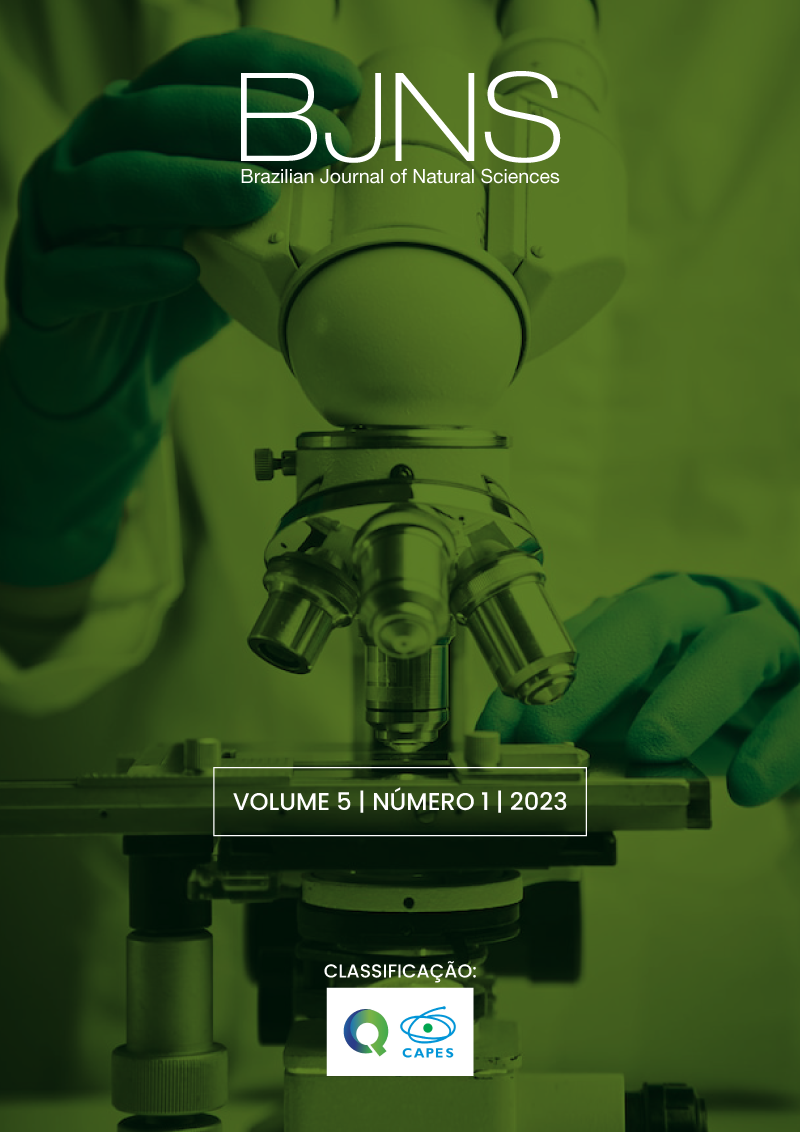Decontamination protocol in the production of herbal medicines: a short communication
Conteúdo do artigo principal
Resumo
Background: The effectiveness and safety of natural products depend not only on the inherent properties of the plant, but also on careful preparation, which includes critical steps such as cleaning to remove impurities and washing to eliminate surface contaminants. Thus, the scientific literature emphasizes the significance of thorough cleaning in ensuring botanical purity, directly impacting the ultimate quality of the product. Methods: The study utilized the plant species Cordia verbenacea, Alternanthera brasiliana, and Lippia alba, cultivated in Tatuí - SP, subjected to a rigorous selection process, and processed through a washing and drying protocol. The washing involved a two-stage process, including immersion in clean water and a sodium hypochlorite solution. Microbiological analyses were conducted on washed and unwashed samples, including enumeration of viable colony-forming units (CFUs) and detection of pathogens. Moisture content was determined using the oven drying method, and ash content was assessed following the Brazilian Pharmacopeia guidelines. Results: Microbiological results indicate the absence of Salmonella sp. and Staphylococcus aureus in all analyzed plant drugs, regardless of washing and stabilization conditions. Pseudomonas aeruginosa was observed only in unwashed/stabilized Cordia verbenacea and Alternanthera brasiliana samples. Escherichia coli was identified in an unwashed/stabilized Lippia alba sample. The washing/stabilization process significantly reduced total bacterial and fungal counts, especially when exceeding the limit set by the Brazilian Pharmacopeia (103 CFU/g). Total ash content remained unchanged after the washing/stabilization process in the three plant species, staying within the Brazilian Pharmacopeia limits (14%). Moisture content did not differ statistically between washed/stabilized and unwashed/unstabilized plant species and met Brazilian Pharmacopeia specifications (8-14%). Conclusion: The washing/stabilization process effectively reduced microbial load in Lippia alba, Alternanthera brasilians, and Cordia verbenacea, with no significant changes in ash and moisture content. Preliminary analysis suggests that processing control ensures minimum quality conditions, enhancing overall safety for consumers.
Detalhes do artigo

Este trabalho está licenciado sob uma licença Creative Commons Attribution-NonCommercial-NoDerivatives 4.0 International License.
Declaração de Direito Autoral - Proposta de Política para Periódicos de Acesso Livre
Autores que publicam no Brazilian Journal of Natural Sciences (BJNS) concordam com os seguintes termos: 1 - Autores mantém os direitos autorais e concedem à revista o direito de primeira publicação, com o trabalho simultaneamente licenciado sob a Creative Commons Attribution License que permitindo o compartilhamento do trabalho com reconhecimento da autoria do trabalho e publicação inicial nesta revista. 2 - Autores têm autorização para assumir contratos adicionais separadamente, para distribuição não-exclusiva da versão do trabalho publicada nesta revista (ex.: publicar em repositório institucional ou como capítulo de livro), com reconhecimento de autoria e publicação inicial nesta revista. 3 - Autores têm permissão e são estimulados a publicar e distribuir seu trabalho online (ex.: em repositórios institucionais ou na sua página pessoal) a qualquer ponto antes ou durante o processo editorial, já que isso pode gerar alterações produtivas, bem como aumentar o impacto e a citação do trabalho publicado.
Este é um artigo de acesso aberto sob a licença CC- BY
(http://creativecommons.org/licenses/by/4.0)
Referências
Smith, J. A. (2010). Clean and Green: The Importance of Plant Cleaning in Drug Preparation. Journal of Herbal Medicine, 15(2), 78-84.
Oliveira, R. S., et al. (2015). Optimizing Washing Techniques for Herbal Drugs: A Review. Journal of Pharmaceutical Sciences, 42(3), 129-135.
Silva, M. L., & Santos, A. B. (2018). Drying Techniques and Their Impact on Medicinal Plants. International Journal of Herbal Medicine, 5(2), 112-118.
Almeida, F. G., et al. (2019). Natural Stabilization Methods for Herbal Drugs: A Comprehensive Review. Phytotherapy Research, 26(4), 565-570.
INSTITUTO ADOLFO LUTZ. Normas analíticas do Instituto Adolfo Lutz:
métodos químicos e físicos para análise de alimentos. p. 1020. São Paulo. Instituto
Adolfo Lutz. 2008.
FARMACOPÉIA BRASILEIRA. 5 ed., Ed.; Atheneu, São Paulo, 2000.
Alvarenga, J.C.; Anndrade, H.B.; Bittencourt, W.J.M.; Brandão, G.C.; Pinto, J.E.B.P.; Bertolucci, S.K.V. Controle de qualidade de drogas vegetais à base de Cymbopogon citratus (DC) Stapf (Poaceae) obtidas no comércio de Lavras e Belo Horizonte-MG. Revista Brasileira de Plantas Medicinais, São Paulo, v. 19, n. 1, p. 31-36, 2017
Costa, R. P. C., Guimarães, A. L. A., & Vieira, A. C. M. (2014). Avaliação da Qualidade de Amostras de Plantas Medicinais Comercializadas no Brasil. Revista Ciência Farmacêutica Básica e Aplicada, 35(3), 425-433. ISSN 1808-4532.
Michelin, D. C., Finati, S. C. G., Sacramento, L. V. S., Vilegas, W., & Salgado, H. R. N. (2010). Controle de qualidade da raiz de Operculina macrocarpa (Linn) Urb., Convolvulaceae. Brazilian Journal of Pharmacognosy, 20(1), 18-22.
Garbin, L., Tiuman, T. S., & Krüger, R. L. (2013). Quality Evaluation of Medicinal Plants Distributed by Health Unit to Inner Cities of Paraná. Revista Ciências Exatas e Naturais, 15(1).
Sonaglio, D., Ortega, G. G., Petrovick, P. R., & Bassani, V. L. (2003). Desenvolvimento tecnológico e produção de fitoterápicos. In: Simões, C. M. O., Schenkel, E. P., Gosmann, G., Mello, J. C. P., Mentz, L. A., & Petrovick, P. R. (Eds.), Farmacognosia: da planta ao medicamento (5ª ed.). Porto Alegre/Florianópolis: Editora da UFRGS/Editora da UFSC.


